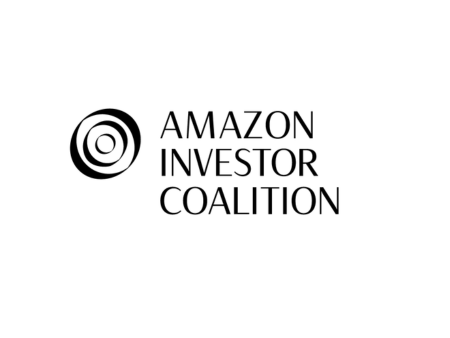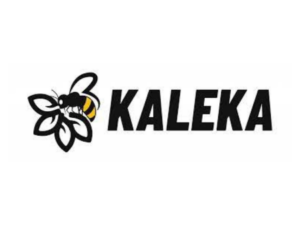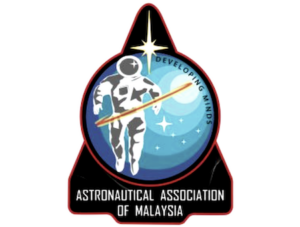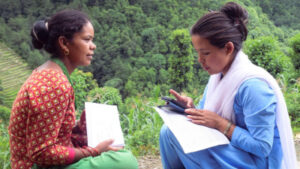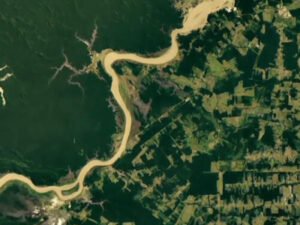The Amazon Investor Coalition is a global learning-and-collaboration platform that unites philanthropists, investors and corporate buyers with local Amazonian producers, nonprofits, governments, and allies.
Renata Fleck Pontes dos Santos spoke with Ambika Samarthya-Howard on May 23, 2025. Click here to read the full conversation with insights highlighted.
Ambika Samarthya-Howard: Tell me about your work with the Amazon Investor Coalition.
Renata Fleck: The Amazon Investor Coalition was founded in 2020 as a collective initiative to mobilize philanthropy and private investment for the Amazon. It is closely connected with the global NEXUS network of philanthropists and social investors, co-founded by Jonah Wittkamper, who also serves as AIC’s CEO.
AIC acts as a connector, convener, and collaborative learning platform. We bring together philanthropists and impact investors with businesses, Indigenous and local community enterprises, and governance actors across the Pan-Amazon. We also link these groups with markets and buyers, recognizing that several critical preconditions must be addressed for Amazonian value chains to succeed.
Philanthropy plays a pivotal role in blended finance by helping to fill gaps in material, organizational, and institutional conditions that precede viable production cycles. These include land regularization, basic logistics, connectivity, technical assistance, trust networks, local governance, and adapted credit.
My role in the Amazon Investor Coalition is to lead a global campaign on bioeconomy, grounded in the 10 high-level principles agreed upon at the G20 during Brazil’s presidency. These ten voluntary principles set a shared vision for a sustainable and inclusive bioeconomy that integrates economic, social, and environmental dimensions; ensures equitable participation and benefit-sharing with Indigenous Peoples and local communities; promotes gender equality; and supports sustainable production, trade, and consumption aligned with the SDGs [Sustainable Development Goals], the Paris Agreement, and the Kunming-Montreal Global Biodiversity Framework.
In the Amazon, this approach is embodied in the sociobioeconomy, practiced by Indigenous peoples and local communities for millennia. It reflects these principles by combining biodiversity conservation with fair, community-driven economic opportunities. This model has the potential to benefit millions, but it requires sustained support to become the new norm, through investment, policy, innovation, and consumer engagement that value standing forests over their destruction.
Ambika Samarthya-Howard: Can you give me a specific example of an organization you work with?
Renata Fleck: Imaflora is a large NGO that works with many indigenous and community organizations. They work on traceability, product traceability, ethical trade, and transparency in supply chains. We work with them to improve their commercial relations and monitoring, and also connect them to buyers. We make the connections and they do the rest of the work, which will entail the commercial part. The project we are working with them on is called Origens Brasil. We work with Mazô Maná, which develops high-value products and services such as superfoods, but they also use technology to conserve the forest and protect over 10 million hectares. They also work with different indigenous communities to source their materials.
Ambika Samarthya-Howard: As I understand it, you help philanthropies fund these organizations and also help these organizations find buyers. What is your coalition model in terms of how you access philanthropic funds?
Renata Fleck: We are essentially a regranting organization, with strong relationships across global philanthropic and investment networks, building on our roots within the NEXUS community. While we operate under a non-solicitation approach, we leverage these trusted connections to identify opportunities where Amazon-focused projects align with philanthropic priorities. We are also developing a more dedicated donor-engagement platform for the Amazon.
Ambika Samarthya-Howard: How would you define the coalition’s role?
Renata Fleck: Although the Amazon Investor Coalition was founded in 2020, we entered a new phase last September with new staff, many of whom bring decades of experience and deep connections in the Amazon. Our aim is to act as a catalyst and convener, not a competitor—we are deeply committed to supporting and amplifying the work of organizations already active in the region. While we currently operate as a regranting organization, our focus is on fostering collaboration and elevating collective impact. I hope the campaign can be leveraged in this way, unifying and amplifying the great work already happening in the Amazon.
Ambika Samarthya-Howard: What is the long-term goal, and how will you achieve it?
Renata Fleck: Our mission is to help shift the Amazon away from an economic model based on deforestation toward one rooted in regenerative practices. We work across several verticals to address the drivers of deforestation: capital flows, finance mechanisms, philanthropy, and carbon markets. We also work within Amazonian economies, partnering directly with organizations to strengthen the value chains of Indigenous and local community enterprises. In addition, our corporate affairs work focuses on the rule of law, along with building strategic partnerships and alliances, because without clear and enforceable regulations on investments, businesses, land rights, and deforestation, lasting change is not possible. This foundation is essential to promoting long-term sustainable development and positioning the Amazon as a global example of hope and regeneration.
Ambika Samarthya-Howard: What is your relationship to governments in the region?
Renata Fleck: As an organization, we are not opposed to engaging with governments, but our work is not primarily government-led. We recognize the importance of supporting public policies and initiatives that align with our mission, particularly those advancing forest protection, Indigenous and local communities’ rights, and regenerative economies. While we don’t have formal partnerships with governments at this stage, we do engage in dialogue and strategic alignment where appropriate.
Ambika Samarthya-Howard: Your organization does many different things, including supply, philanthropy, and business modeling, along with legal issues. Do you feel like it helps to do all of that because then you’re part of the whole workflow?
Renata Fleck: Yes. Our strategy is to amplify and provide visibility to the organizations who do the work. Our systemic approach helps us fill in the different gaps within the organizations with whom we work. By fostering strong alliances and partnerships, we become part of the entire workflow, creating stronger, more sustainable outcomes.
Ambika Samarthya-Howard: How big is your team, and how many programs are you working on now?
Renata Fleck: Our team is about 17 people and we have 14 projects at the moment.
Ambika Samarthya-Howard: How do you know you’re having an impact? What have you found to be most effective or most successful in the work that you’ve been doing?
Renata Fleck: We are developing our own impact metrics, and for now, we draw on the metrics from the grant proposals we support. These include conserved areas, the number of families and women supported, and other indicators specific to each vertical we work in. For example, in the legal sphere, impacts are less direct and require different ways of measuring success. As this is our first year of grant disbursement, many projects are still underway, so the full set of metrics and numbers will be presented once they are completed. That said, we have already seen strong early results and significant progress across multiple projects.
Ambika Samarthya-Howard: We know why we need to protect the forest in terms of humanity and in terms of everyone’s health and well-being. But there’s also a market for indigenous goods and foods from the forest. Can you talk more about those opportunities?
Renata Fleck: There are a lot of opportunities in the food, medical, self care and cosmetics. The forest produces thousands of oils with different compounds that we are not even aware of. There also is the movement that relates our health to our relationship with nature as well. We also are faced with a food system that is collapsing because we eat basically the same few products. The Amazon produces more than 250 fruits, for instance. Amazonia has this potential to bring this forward to our thinking not only in conservation, but also in our relationship with nature, but also in our health system, overall. Through our bioeconomy campaign, we are working to position Amazonian food culture as both a conservation strategy and a driver of regenerative economies, linking biodiversity, traditional knowledge, and market opportunities. This is not only about protecting the forest; it’s about rethinking our food systems, strengthening cultural identity, and improving health and well-being worldwide.
Ambika Samarthya-Howard: There is conflict between saving the forest and how much we use the forest in economic ways. We want to preserve indigenous land and indigenous ways of life, but then the more we do that, the less they may have market opportunities. What is the coalition’s view of this conflict?
Renata Fleck: We need to change the way we think about the Amazon. It is not an empty space to be cleared for monoculture; it is the planet’s largest and most complex biodiversity hotspot, a living, planetary ecosystem that must be valued, protected, and treated as such. It is also home to around 50 million people across the Pan-Amazon, whose cultures, livelihoods, and knowledge are deeply intertwined with the forest’s future. The forest holds enormous economic potential that, when approached responsibly, can sustain the livelihoods of the people who live there while benefiting the entire world. But this potential can only be realized through models that respect biodiversity, culture, and social well-being—not through the extractive logic of monoculture.
In the socio-bioeconomy, scalability isn’t about vast, uniform plantations. It’s about capillarity: networks of small-scale, diverse, pre-productive arrangements and interdependent production systems that reflect the richness of the forest itself. Here, we invest in social technologies, capacity building, and logistics tailored to thousands of species and the communities that have the knowledge to manage them sustainably. This is already difficult for many to grasp, because when most people think of biodiversity, they picture a handful of species. In the Amazon, we are talking about thousands, each with its own ecological role and potential value.
There’s no inherent conflict between preserving Indigenous lands and creating market opportunities—if those opportunities are designed by them and with them, in ways that reinforce, rather than replace, traditional ways of life. That requires long-term commitments from the private sector under clear values and ethics, political will from governments, and education for consumers so they understand the true value of forest-based products.
Ambika Samarthya-Howard: Can you give examples of what you mean by different products focused on socio-bioeconomy?
Renata Fleck: Natura is a great example. They sell cosmetics and beauty products sourced from the forest, and they made a bold, long-term investment over ten years that has been very successful. Lush is another, with which we have collaborated on projects. Other important examples include Origens Brasil and Gosto da Amazônia, both of which help connect forest products to markets in ways that respect local cultures and ecological cycles. The challenge is often in building demand, but once companies understand the value of these products—not just economically, but for climate, biodiversity, and culture—they are more willing to invest.
Adding value is also key. For example, a community might not only harvest an oil but also filter and process it locally. That simple manufacturing step already increases the product’s value and provides higher income than selling it raw.
Ultimately, it’s about creating demand for a basket of products—foods, oils, fibers, medicines—each with different harvest cycles, because, as I mentioned, the forest can provide a wide variety of things, but not all at once as in monoculture. That’s why this diversity and cyclical nature of production are so important, and why communities need the means and knowledge to manage them collectively. This is the essence of the socio-bioeconomy: diverse, high-quality products that keep the forest standing, improve local livelihoods, and contribute to climate stability.
Ambika Samarthya-Howard: Can you describe the existing economy of the Amazon in comparison to the socio-bioeconomy?
Renata Fleck: Today, much of the Amazon’s economy is tied to deforestation-based supply chains, particularly cattle ranching and soy production. The cycle often starts with illegal logging—trees are cut and sold for timber—followed by clearing land for pasture or large-scale monoculture crops. Once the forest is gone, the soil quickly loses fertility, becomes degraded, and requires heavy use of agrochemicals. A deforestation-free supply chain would avoid products linked to this process, but rather than framing it in polarizing terms, our approach is to demonstrate the economic value of keeping the forest standing and regenerating.
The socio-bioeconomy offers exactly that alternative. It is built on biodiversity-based value chains that can generate more income over time than cattle ranching or soy monocultures, while restoring and protecting ecosystems. Research by the World Resources Institute shows that developing the Amazonian bioeconomy could add around R$45 billion to Brazil’s GDP, proving that this model is not only environmentally necessary but economically advantageous. If we can channel investment, policy, and market demand toward these diverse forest-based products, even current cattle and soy producers can see a viable path in shifting to more regenerative practices.
Ambika Samarthya-Howard: What is challenging about this work? Why has it been difficult to route climate finance to the right people, despite there being commitment and money from the Brazilian government and around the world for these efforts?
Renata Fleck: In my opinion, the biggest challenges are a lack of communication, learning, and understanding. Much of the climate finance conversation—and the rules or mechanisms created so far—has not been designed by or for regions with the immense biodiversity and cultural complexity of the Amazon. This means that many decision-makers simply cannot grasp the scale, the interconnectedness, and the realities we are talking about. There is also a broader lack of ecological understanding. Many people do not see themselves as part of nature, and therefore struggle to recognize that they, too, are connected to and dependent on the Amazon.
We try to address this through collaborations, such as with the World Climate Foundation, by supporting events where Amazon-based projects can be showcased to investor and philanthropic portfolios. But in the climate, finance, and philanthropy space, most of the flows are concentrated between the U.S. and the E.U., and those with deep knowledge of Amazonian ecosystems are often not the ones being listened to. There is also, at times, a lack of willingness to listen and understand, so these conversations don’t reach the people on the frontlines who could use the funds most effectively.
Geopolitics also play a role. In recent years, we’ve seen moments such as the U.S. leaving the Paris Agreement or USAID reducing support for certain organizations, which disrupted progress. However, with Brazil’s presidency in the G20 and the upcoming COP30 being hosted in the Amazon, there is a unique opportunity to shift this dynamic. COP30 will not only bring global attention to the region but also help the world better understand what we mean when we talk about the Amazon, encouraging more targeted support and amplifying the voices that matter most.
Ambika Samarthya-Howard: Let’s talk about indigenous land stewardship, which many people want to do, but we need examples of it working. Can you share an example of a project you’re working on?
Renata Fleck: We work in several Indigenous-led projects, such as with the Metareilá Association Suruí. This includes supporting families to build facilities for fermentation, drying, and storage of forest products, as well as partnering with women-led sustainable forest resource management initiatives for cultural preservation. While they have traditionally focused on chocolate, we are now supporting them in diversifying their farms so that income comes from multiple products rather than a single source.
We are also working on capacity-building programs to strengthen governance and address other organizational needs. It’s equally important to highlight the growing Indigenous entrepreneurship movement in the Amazon. Indigenous peoples are leading enterprises across diverse sectors—from food and cosmetics to cultural tourism and handicrafts—combining traditional knowledge with innovative business models. These initiatives are not only generating income but also reinforcing cultural identity, conserving biodiversity, and inspiring new forms of regenerative economic development.
Ambika Samarthya-Howard: What has been the most surprising thing that you have learned during this work?
Renata Fleck: One of the most surprising things I’ve learned is how little people truly understand what we mean by biodiversity. Many have no real sense of its scale or complexity in the Amazon. The same happens when we talk about culture. We can easily refer to American, French, or German culture in familiar terms, but when we speak about Indigenous or riverine cultures, we’re talking about entirely different ways of perceiving and relating to the world—how territory, home, nature, money, community, and sharing are understood.
Indigenous peoples and local communities exist all over the world, and they hold distinct ways of understanding and experiencing life. These perspectives are exactly what have enabled them to protect biodiversity and live in harmony with nature for generations. There is so much we can learn from this—about balance, stewardship, and resilience—if we are open and willing to listen. Many people outside the Amazon, and even in cities within the region, have never had the chance to experience these worldviews directly. The good news is that more and more Indigenous-led initiatives are bringing these perspectives forward, showing the world not just their products, but the values and ways of life that sustain the forest and all it provides.
Ambika Samarthya-Howard: What advice would you give to others working in other parts of the world or even in other parts of the Amazon?
Renata Fleck: My advice is simple: work with the people of the place, not around them. Listen to their priorities first and let those guide the work. Show up as an ally, not a savior, because people on the ground don’t need rescuing; they need partners who respect their knowledge, trust their leadership, and stand beside them. Real change happens when solutions are co-created and rooted in the realities of those who live and care for the land every day.
Ambika Samarthya-Howard: What are some mistakes you have made that you wish you could go back and change?
Renata Fleck: We’ve been in this new phase for less than a year, and as someone new to working here, I carry the premise that listening and genuine collaboration are the best ways forward in everything I do. That means taking the time to truly understand the place, the people, their priorities, and the realities they navigate every day. It’s about aligning our actions with their needs, being mindful of local structures, and ensuring that when we engage, it’s meaningful for those on the ground.
I’ve learned how important it is to consider the time, logistics, and resources it takes for communities to participate. For example, what might be a quick meeting for us could require hours—or even days—of travel for them, taking them away from their daily work. We need to make sure that if people commit that time, they are properly compensated, whether financially or through direct support that offsets the cost of their participation. Their time and knowledge are valuable, and engaging with them should never come at their expense.
At the heart of it, the work is about being an ally—showing up with respect, co-creating solutions, and ensuring that our presence supports, rather than burdens, the people who are already doing the hard work of protecting the forest.
Ambika Samarthya-Howard: Is there anything else you’d like to add to our conversation?
Renata Fleck: We are starting our Bioeconomy campaign, and for me—as a committed socio-environmentalist and ecofeminist—it’s not always easy to talk about economics and product markets in the same breath as climate change, biodiversity conservation, and Indigenous rights. These conversations don’t traditionally go hand in hand, but they must, because livelihoods, biodiversity, and cultural survival are deeply interconnected with the economic means of communities.
That’s why food culture is at the heart of the campaign we are building. Our campaign frames Amazonian food systems as an entry point to understanding culture, territory, the socio-bioeconomy, food sovereignty, and water. Traditional food practices are not only about nourishment—they are expressions of identity, governance, and traditional knowledge, woven into the rhythms of the forest. By connecting gastronomy, biodiversity, and regenerative value chains, we show how safeguarding cultural and territorial rights is essential to protecting ecosystems and strengthening climate resilience. In doing so, we aim to create new pathways for markets, policies, and investments that keep the forest standing while honoring the people who have protected it for generations.
Ambika Samarthya-Howard: Thank you.
Click here to read the full conversation with insights highlighted.
Ambika Samarthya-Howard (she/her) is the Solutions Journalism Network’s Chief Innovation Officer: She leads on innovation and technology, leverages communication platforms for the network strategy and creates cool content. She has an MFA from Columbia’s Film School and has been creating, teaching and writing at the intersection of storytelling and social good for two decades. She has produced content for Current TV, UNICEF, Havas, Praekelt.org, UNICEF, UNFPA, Save the Children, FCDO, Global Integrity and Prism.
* This interview has been edited and condensed.

